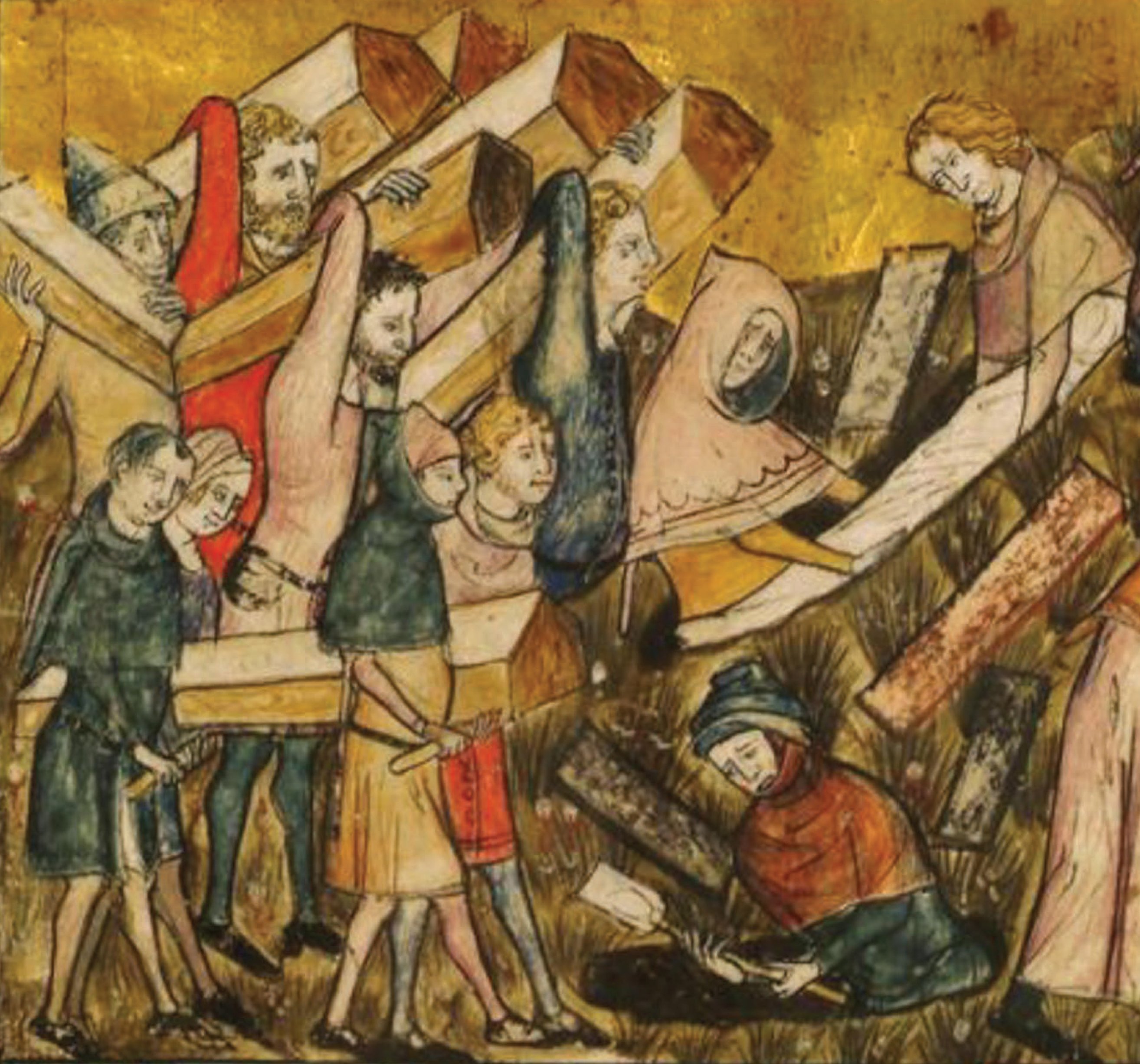11Crises and Recovery in Afro-Eurasia
1300–1500

Core Objectives
- DESCRIBE the nature and origins of the crises spanning Afro-Eurasia during the fourteenth century.
- ASSESS the impact of the Black Death on China, the Islamic world, and Europe.
- COMPARE the ways in which regional rulers in post-plague Afro-Eurasia attempted to construct unified states, and ANALYZE the extent and nature of their successes.
- EXPLAIN the role that religious belief systems played in rebuilding the Islamic world, Europe, and Ming China in the fourteenth and fifteenth centuries.
- EXAMINE the way art and architecture reflected the political realities of the Islamic world, Europe, and Ming China after the Black Death.
- COMPARE how Ottoman, Iberian, and Ming rulers extended their territories and regional influence.
When Mongol armies besieged the Genoese trading outpost of Caffa on the Black Sea in 1346, they not only damaged trading links between East Asia and the Mediterranean but also unleashed a devastating disease: the bubonic plague. Defeated Genoese merchants and soldiers withdrew, unknowingly taking the germs with them aboard their ships. By the time they arrived in Messina, Sicily, half the passengers were dead. The rest were dying. People waiting on shore for the ships’ cargoes were horrified at the sight and turned the ships away. Desperately, the captains went to the next port, only to face the same fate. Despite these efforts at isolation, Europeans could not keep the plague (later called the Black Death) from reaching their shores. As it spread from port to port, it eventually contaminated all of Europe, killing nearly two-thirds of the population.
This story illustrates the magnitude and complexity of the Mongol invasions. They devastated polities, ravaged trade routes, and unwittingly unleashed the bubonic plague. The invasions left behind a series of khanates ruled by local warlords, rather than a centralized state. But Mongol invasions also intensified cultural and political contacts. The channels of exchange—the land trails and sea-lanes of human voyagers—became accidental conduits for deadly microbes. Indeed, these germs devastated societies far more decisively than did Mongol warfare. They were the real “murderous hordes” of world history. So staggering was the Black Death’s toll that population densities did not recover for 200 years. Most severely affected were regions that the Mongols had brought together: settlements and commercial hubs along the old Silk Roads and around the Mediterranean and South China Seas. While segments of the Indian Ocean trading world experienced death and disruption, South Asian societies, which had escaped the Mongol conquest, also escaped the great loss of life and political disruptions associated with the Black Death.
Out of the rubble of Mongol conquest and disease emerged the green shoots of a new world. This chapter explores the ways in which Afro-Eurasian peoples restored what they thought was valuable from old traditions after these crises, while discarding what they thought had failed them in favor of radically new institutions and ideas. Much of the recovery had striking similarities across Afro-Eurasia, as societies reaffirmed their most deeply held and long-standing beliefs. Chinese rulers looked to Confucian thought and well-known dynastic institutions to provide guidance going forward. In the Muslim heartland, a small band of Turkish-speaking warriors—the Ottomans—channeled the energies of a revived Islam to expand their own territory and the Muslim world. Europeans also invoked their traditions. In the Iberian Peninsula, political elites used a resurgent Catholicism to spread their political power and drive Muslim communities out of Europe. Europeans also created new dynastic monarchies and looked to their distant past in Greek and Roman culture for inspiration.
Global Storyline
The Black Death, Recovery, and Conquest
- The spread of the Black Death and the collapse of the Mongol Empire set off crises across Afro-Eurasia, with major demographic, political, economic, and cultural consequences.
- Across Afro-Eurasia, continuity in religious beliefs and cultural institutions accompanies changes in political structures in Europe, the Muslim world, and China.
- In central Eurasia, new rulers—most notably the Ottomans—rebuild dynasties in place of the Mongols, using a blend of religion, military expansion, administrative control, and cultural tolerance.
- In western Christendom, new monarchies establish political order, and the Renaissance brings a cultural rebirth to societies devastated by plague.
- In East Asia, the Ming dynasty replaces the Mongol Yuan dynasty, using an elaborate Confucian bureaucracy to oversee infrastructure and long-distance exchange.